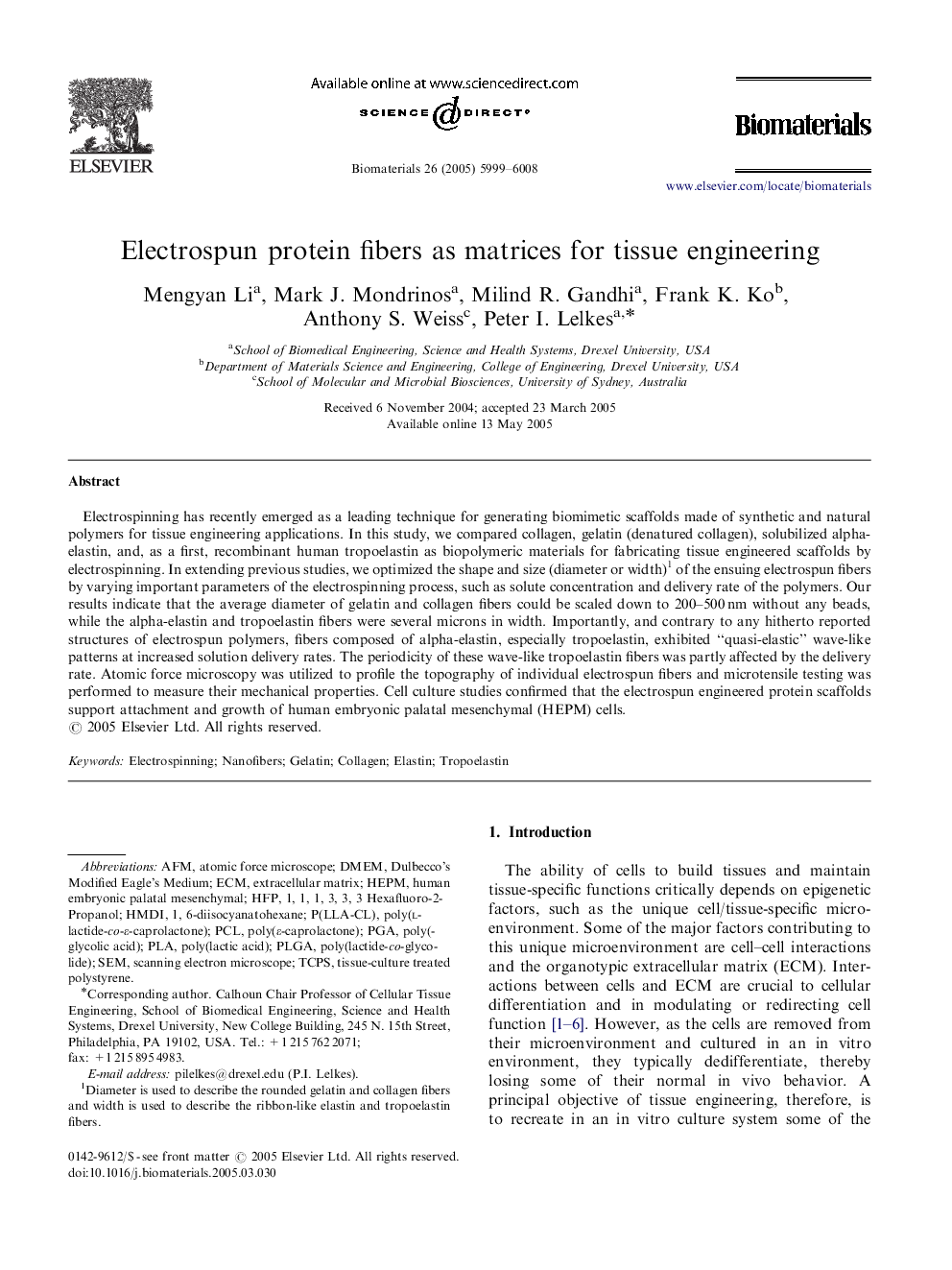| Article ID | Journal | Published Year | Pages | File Type |
|---|---|---|---|---|
| 12217 | Biomaterials | 2005 | 10 Pages |
Electrospinning has recently emerged as a leading technique for generating biomimetic scaffolds made of synthetic and natural polymers for tissue engineering applications. In this study, we compared collagen, gelatin (denatured collagen), solubilized alpha-elastin, and, as a first, recombinant human tropoelastin as biopolymeric materials for fabricating tissue engineered scaffolds by electrospinning. In extending previous studies, we optimized the shape and size (diameter or width)1 of the ensuing electrospun fibers by varying important parameters of the electrospinning process, such as solute concentration and delivery rate of the polymers. Our results indicate that the average diameter of gelatin and collagen fibers could be scaled down to 200–500 nm without any beads, while the alpha-elastin and tropoelastin fibers were several microns in width. Importantly, and contrary to any hitherto reported structures of electrospun polymers, fibers composed of alpha-elastin, especially tropoelastin, exhibited “quasi-elastic” wave-like patterns at increased solution delivery rates. The periodicity of these wave-like tropoelastin fibers was partly affected by the delivery rate. Atomic force microscopy was utilized to profile the topography of individual electrospun fibers and microtensile testing was performed to measure their mechanical properties. Cell culture studies confirmed that the electrospun engineered protein scaffolds support attachment and growth of human embryonic palatal mesenchymal (HEPM) cells.
